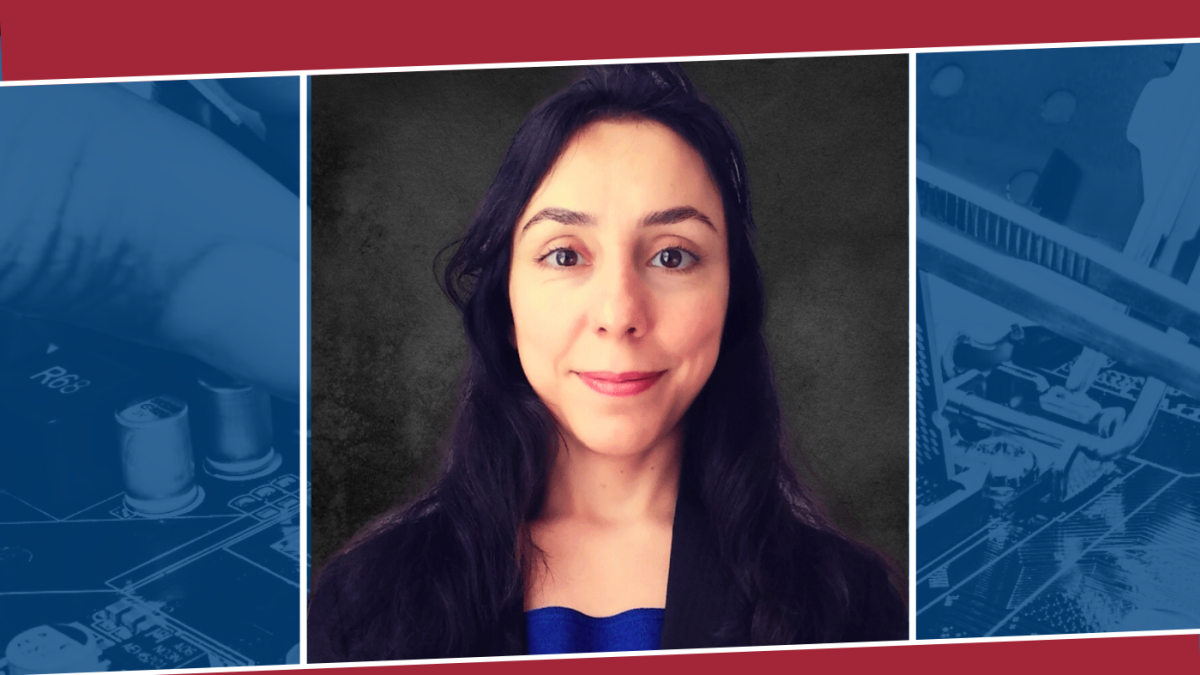Elnaz Banan Sadeghian Receives $550,469 NSF CAREER Award with Plans to Pack More Data into Hard Drives
The electrical and computer engineering researcher seeks to design next-generation two-dimensional magnetic recording technologies
This year, the world’s total data-usage will reach 120 zettabytes — that’s 120 trillion gigabytes, or enough to store audio recordings of every word ever spoken by every human who has ever lived three times over. With the world’s appetite for data-hungry technologies — from streaming video to AI tools — only increasing, new solutions to make high-volume data storage and retrieval faster, cheaper and more reliable are urgently needed.
That’s where Elnaz Banan Sadeghian comes in. An assistant professor in the Department of Electrical and Computer Engineering at Stevens Institute of Technology, Banan Sadeghian recently received a prestigious National Science Foundation CAREER Award to support her work developing transformative new ways of writing and reading data to hard drives.
The NSF award provides $550,469 in funding over the next five years toward Banan Sadeghian’s research into some of the thorniest problems associated with what’s known as two-dimensional magnetic recording (TDMR) — an advanced storage method that could soon make it possible to load up to 10 terabits (1 trillion bits) onto a single square inch of hard-drive media.
Titled “Multitrack Read Channel Designs for Modern Two-Dimensional Magnetic Recording,” the project seeks to develop noise prediction, synchronization, and symbol detection algorithms to improve data recovery and to develop more efficient methods of “reading” or converting analog data signals that will increase data density.
Turning interference into an asset
While most laptops now use solid-state data storage, data centers — where most of the world’s data resides — rely on cheaper, more reliable hard drives containing spinning disks on which data is magnetically written in concentric circles, similar to the grooves on a vinyl LP. Conventional hard drives leave a space between each data track, but TDMR systems squeeze the tracks together until they begin to overlap, enabling up to 10 times more data to be written to any given hard-drive platter.
Unlocking the power of TDMR — also known as “shingle recording” because the tracks overlap like roofing shingles — is challenging, with interference and “noise” creeping in as the magnetic fields representing bits of data are scrunched into smaller and smaller spaces. Every hard drive has to manage interference between individual bits arranged linearly on a single track, but TDMR methods must also manage interference between overlapping tracks.
“That’s why it’s considered two-dimensional — you have interference both linearly and between tracks, which makes it a much, much harder problem to solve,” Banan Sadeghian said.
To overcome those challenges, Banan Sadeghian uses a multi-pronged approach, combining conventional communications systems signal processing tools and novel neural networks and AI algorithms to quickly and accurately extract reliable data from shingled hard-drive tracks.
Banan Sadeghian’s research leverages the fact that hard drives contain multiple readers — sensors (akin to the needle on a record player) that detect the magnetic waveforms used to record data.
Normally, the readers screen out interference from adjacent tracks to capture information from a single target track. For TDMR systems, however, it’s possible to take a superior approach and use those varying inputs to simultaneously capture and process data from multiple adjacent tracks.
“We’re turning cross-track interference into an asset rather than an obstacle. By reading multiple tracks at the same time, we can dramatically increase the speed and accuracy with which TDMR systems operate,” Banan Sadeghian explained. “In the long run, that makes it possible to fit far more data onto a hard drive.”
Complicating the retrieval process, data isn’t stored at the same rate on adjacent tracks: variations in spin speed mean that some data bits take up more space than others. Using a novel algorithm called ROTAR, Banan Sadeghian has overcome this challenge for the first time, enabling multitrack retrieval even when data-streams aren’t fully synchronized.
“This is a vital capability for real-world TDMR applications,” she explained.
Keeping fast data retrieval
Other advanced TDMR data detection methods treat hard drives as two-dimensional images and use image-processing tools to “read back” the data. That approach requires the disk to be scanned before retrieval can begin, significantly slowing the readback process.
Banan Sadeghian’s approach, in contrast, uses more surgical sampling of the disk, with algorithms that accept vector-valued inputs and retrieve the written data with far less latency. This low latency approach is in accordance with the expectation of the industry for TDMR implementations.
Cutting through the noise
Finally, Banan Sadeghian is working to reduce the background noises that naturally creep in as magnetic signals are recorded and retrieved from hard drives. A predominant data-dependent noise is caused both by the physical properties of the drive itself and by interference between data tracks, making the noise very difficult to screen out.
Conventional TDMR noise-reduction methods increase the complexity of the detection algorithms to the extent that it is impossible to extend them to the already more complex multitrack detection algorithms. Banan Sadeghian is working to develop novel techniques including neural networks to overcome this challenge.
Each of Banan Sadeghian’s methods are powerful in their own rights, with her previous work delivering an up to 80% increase in data density by combining multitrack reading, algorithms to manage track asynchrony, and the use of neural networks to reduce noise.
Developing these solutions in parallel and building a unified system of algorithms and software modules to offer efficient, low-latency TDMR readback is in itself an important innovation, Banan Sadeghian pointed out.
“Other researchers have offered point-solutions to specific TDMR challenges, but it’s hard to get those solutions to work together once they’re built,” Banan Sadeghian explained. “This is the first attempt to overcome all these challenges within a single system, which is what’s needed to bring the benefits of TDMR into real-world industrial applications.”
